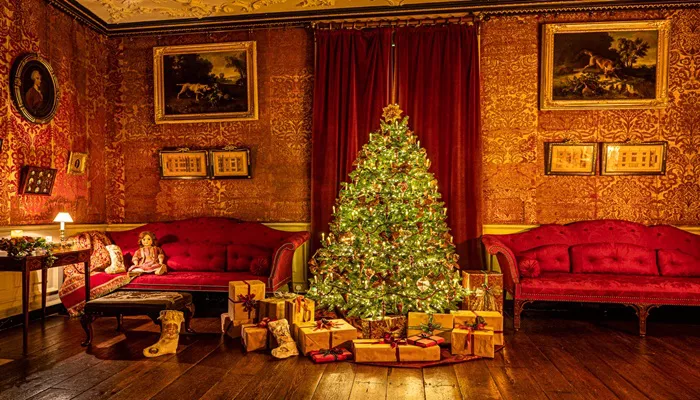As the holiday season approaches, homes around the world begin to sparkle with festive lights, ornaments, and the unmistakable presence of a Christmas tree. For many, this cherished tradition represents joy, family gatherings, and the spirit of giving. However, some individuals view the act of decorating a Christmas tree through a different lens, associating it with witchcraft and pagan practices. This perspective invites a deeper exploration into the historical, cultural, and spiritual dimensions of this beloved holiday custom. In this article, we will examine why some consider decorating a Christmas tree to be an act of witchcraft, while also highlighting the rich tapestry of beliefs that surround this tradition.
The Historical Context of Christmas Trees
Origins in Pagan Traditions
The use of evergreen trees during winter celebrations predates Christianity and can be traced back to various pagan traditions. Ancient cultures revered evergreens for their ability to remain vibrant throughout harsh winters, symbolizing life and resilience. For example, the ancient Egyptians worshiped the god Ra and brought palm fronds into their homes during the winter solstice as a symbol of triumph over death. Similarly, the Romans celebrated Saturnalia with evergreen decorations as part of their festivities.
The Transition to Christianity
As Christianity spread across Europe, many pagan customs were incorporated into Christian celebrations to facilitate conversion. The Christmas tree is believed to have originated in Germany during the 16th century when devout Christians began bringing decorated trees into their homes as a symbol of eternal life through Christ. The use of lights on trees symbolizes Jesus as the “light of the world,” while ornaments often represent various aspects of Christian faith.
The Symbolism Behind Decorating a Christmas Tree
Nature and Spirituality
For many cultures, nature has always held profound spiritual significance. The act of decorating a Christmas tree can be seen as a way to honor nature and its cycles. The evergreen tree represents life amidst death and darkness—a powerful metaphor that resonates deeply during the winter months when many plants lose their leaves.
Personal Expression and Intention
Decorating a Christmas tree is also an opportunity for personal expression. Families often adorn their trees with ornaments that reflect their unique stories, memories, and beliefs. Each ornament can hold significant meaning—whether it’s a handmade decoration from childhood or a gift from a loved one—creating a tapestry of personal history that is both beautiful and meaningful.
Why Some View Decorating a Christmas Tree as Witchcraft
Misunderstanding Cultural Practices
One reason some individuals associate decorating a Christmas tree with witchcraft is due to misunderstandings surrounding cultural practices. The blending of pagan traditions with Christian beliefs can create confusion about what is considered sacred versus secular. For those who hold strict interpretations of Christianity, any practice that resembles paganism may be viewed with suspicion.
The Influence of Modern Witchcraft
In contemporary society, there has been a resurgence in interest regarding witchcraft and pagan practices. Some modern witches incorporate evergreen trees into their rituals as symbols of life and protection during winter months. This revival can lead to misconceptions that all forms of tree decoration are inherently linked to witchcraft.
Ritualistic Elements
The act of decorating itself can resemble ritualistic behavior—selecting ornaments, stringing lights, and placing the star or angel atop the tree can feel like an intentional ceremony. For those sensitive to spiritual practices, this intentionality may evoke associations with witchcraft or other esoteric traditions.
The Intersection Between Tradition and Spirituality
A Celebration of Life
Ultimately, decorating a Christmas tree transcends mere aesthetics; it embodies themes of hope, renewal, and community. Many people find spiritual significance in this tradition regardless of their religious affiliation. The act serves as a reminder that even in the darkest times—symbolized by winter—the promise of renewal (spring) is always on the horizon.
Connecting Generations
For families around the world, decorating the Christmas tree has become an intergenerational ritual that fosters connection between past and present. Children learn about their family’s history through stories tied to ornaments while participating in creating new memories each year. This sense of continuity reinforces familial bonds and instills values such as love, generosity, and gratitude.
Navigating Misconceptions: Embracing Diversity in Beliefs
Respecting Different Perspectives
It’s essential to approach discussions about traditions like decorating a Christmas tree with respect for diverse perspectives. While some may view it through a lens colored by religious beliefs or cultural backgrounds that emphasize separation between paganism and Christianity, others celebrate its multifaceted meanings.
Finding Common Ground
At its core, decorating a Christmas tree can be seen as an expression of love—love for family, love for nature, and love for life itself. By focusing on these universal themes rather than differences in belief systems or practices, we can foster understanding among individuals from various backgrounds.
See also: Why Do We Celebrate the Birth of Jesus Christ?
Conclusion: A Celebration Beyond Labels
In conclusion, while some may perceive decorating a Christmas tree as an act associated with witchcraft due to its historical roots in pagan traditions or modern interpretations within witchcraft practices, it is crucial to recognize that this beloved custom holds diverse meanings for different people. It serves as an opportunity for personal expression, family bonding, and celebration of life’s enduring cycles.
As we navigate our own beliefs and traditions during this festive season—whether we see it through a religious lens or simply enjoy its beauty—we should strive to appreciate the rich tapestry woven from history, culture, spirituality, and love that surrounds our shared human experience. In doing so, we allow ourselves to embrace both our differences and our commonalities while celebrating one another’s journeys through life’s seasons.
As you decorate your own tree this year—whether adorned with cherished heirlooms or new creations—take a moment to reflect on what this tradition means to you personally. Allow it to serve not only as an ornamented centerpiece but also as a symbol of hope and connection in our ever-changing world.
Related topics:

